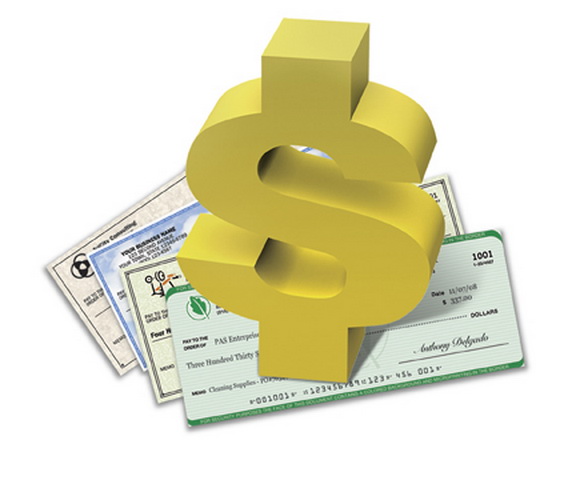How to Ensure You Maximize Your SS Benefits

As retirement gets closer and closer for many of us, it is in our best interest to understand the Social Security program as it may be one of the sole streams of income, if not the primary for many, in their later years.
According to the Center on Budget and Policy Priorities, if Social Security did not exist, 22,000,000 citizens would be below the poverty line.
Some may not know this, but to a certain extent, how much you receive in benefits is up to you, which is why it is very important to know as much about this program as much as possible.
We will go over some useful pointers to help you get your feet wet.
First, you need to know your full retirement age (FRA), as that is the year when you may be eligible to begin receiving full benefits. The full retirement age was once the same for everyone, which was 65. However, changes were made by lawmakers as people were living much longer than the generations living at the time that Social Security was introduced. Don’t be surprised if more changes come out way in the future.
Let’s breakdown what the full retirement age is based on the year that you were born:
Those born between 1943 and 1954 have an FRA of 66. Americans that have the birth year of 1955 have the full retirement age of 66 years and two months. The birth year of 1956 has an FRA of 66 years and four months, where 1957 has 66 years and six months. Those that were born in 1958 have a full retirement age of 66 years and eight months, and those born in 1959 have an FRA of 66 years and ten months. Those who were born in 1960 or later have an FRA of 67 years.
The second thing to figure out is to figure an estimate of how much you receive in benefits, and how you may be able to increase the amount. In June of 2019, the average Social Security benefits check was $1,470, which totals out to be $17,640 on an annual basis. And as low as that amount already is, it is the average, which means many Americans may be receiving a lower amount than that. The maximum amount some receive is around $2,790, or $33,480 annually.
Also, keep in mind that these benefits to get cost-of-living adjustments to combat inflation.
Unfortunately, not many people have an average or maximum benefit amount, which is why it is important to know how much you should expect to be receiving in benefits. You can calculate this by going to the Social Security Administration’s online page and creating a “My Social Security” account. After this has been set up, you should be able to go in and see what records of earnings the SSA has along with what your future benefits currently are.
Make sure that if there are any mistakes that you reach out to the Social Security Administration to get them fixed.
The estimate that is listed on the website is based on your filing for your benefits at your full retirement age. If you hold off longer from receiving the benefits, you should be able to increase your monthly checks. For those that start taking those check early, you will receive a lesser amount than if you would have waited. However, the more time you delay receiving your benefits, the fewer checks there will be, and the earlier you start your benefits, the more checks there will be.
Those that do not need their SS benefits immediately after they retire or they plan to wait longer to retire can delay receiving their payments until the age of 70. For each year that you push off from collecting your benefits from FRA, your benefits would be raised by 8 percent.
For those that do need to tap into their benefits as soon as possible, you can do this at age 62, but you can reduce your benefits from 25 to 30 percent.
Let’s break down the percentage of how much you receive depending on the age you start collecting and when your FRA is.
If you decide to collect at age 62:
If your full retirement age is 66, then you should receive 75 percent of your full benefits.
If your full retirement age is 67, then you should receive 70 percent of your full benefits.
If you decide to collect at age 63:
If your full retirement age is 66, then you should receive 80 percent of your full benefits.
If your full retirement age is 67, then you should receive 75 percent of your full benefits.
If you decide to collect at age 64:
If your full retirement age is 66, then you should receive 86.7 percent of your full benefits.
If your retirement age is 67, then you should receive 80 percent of your full benefits.
If you decide to collect at age 65:
If your full retirement age is 66, then you should receive 93.3 percent of your full benefits.
If your full retirement age is 67, then you should receive 86.7 percent of your full benefits.
If you decide to collect at age 66:
If your full retirement age is 66, then you should receive 100 percent of your full benefits.
If your full retirement age is 67, then you should receive 93.3 percent of your full benefits.
If you decide to collect at age 67:
If your full retirement age is 66, then you should receive 108 percent of your full benefits.
If your full retirement age is 67, then you should receive 100 percent of your full benefits.
If you decide to collect at age 68:
If your full retirement age is 66, then you should receive 116 percent of your full benefits.
If your full retirement age is 67, then you should receive 108 percent of your full benefits.
If you decide to collect at age 69:
If your full retirement age is 66, then you should receive 124 percent of your full benefits.
If your full retirement age is 67, then you should receive 116 percent of your full benefits.
If you decide to collect at age 70:
If your full retirement age is 66, then you should receive 132 percent of your full benefits.
If your full retirement age is 67, then you should receive 124 percent of your full benefits.
Another thing you must do is to learn how to maximize your SS benefit in other ways.
Your monthly payment amount is based on a calculation that takes an average of your income from the period of 35 years that you made the most money. For those that plan to work less than 35 years, you will receive a 0 for each year that makes up the difference to 35. For instance, if you only work for 30 years, you will have five 0s placed into your calculations, which will lessen your benefit amount. It is recommended to work 35 years consecutively, if possible, to maximize your benefit amount.
For those that have worked 35 years or more, if you are making more than you did at the initial start of your working career, you may want to consider working a little bit longer. That way, the extra high salary income year will bump the lower beginning year to give you a higher average of earnings, which will provide you with an increase in your benefits.
For those that are married, it is highly advised that you plan and strategize both your SS benefits so that you know when each of you begins receiving benefits. For instance, if you have made more in your career than your partner if may be best to have them start receiving their benefits earlier than you. As you delay your benefits until the age of 70, your family will still have income coming in from the other SS benefit. Then, once you start collecting your benefits, both of you will have an increase in income. Another plus is that when one of you passes, the other will be able to select the higher of the two benefits to continue collecting as they are only allowed one.
Keep in mind that everyone’s circumstances and needs are quite different from others, so be sure to do your research on such plans to understand what will be best for you and your spouse based on your age, earnings, savings, etc.
It may be in your best interest to work with an experienced advisor that is only fee-based so that they can uncover your needs and options that will better suit your family.
And lastly, be sure to keep up-to-date with Social Security news so that you know when changes are made and how they may affect you and your retirement.
Remember, the more knowledge you have about the SS program, the more you know about how you can collect as much possible.






